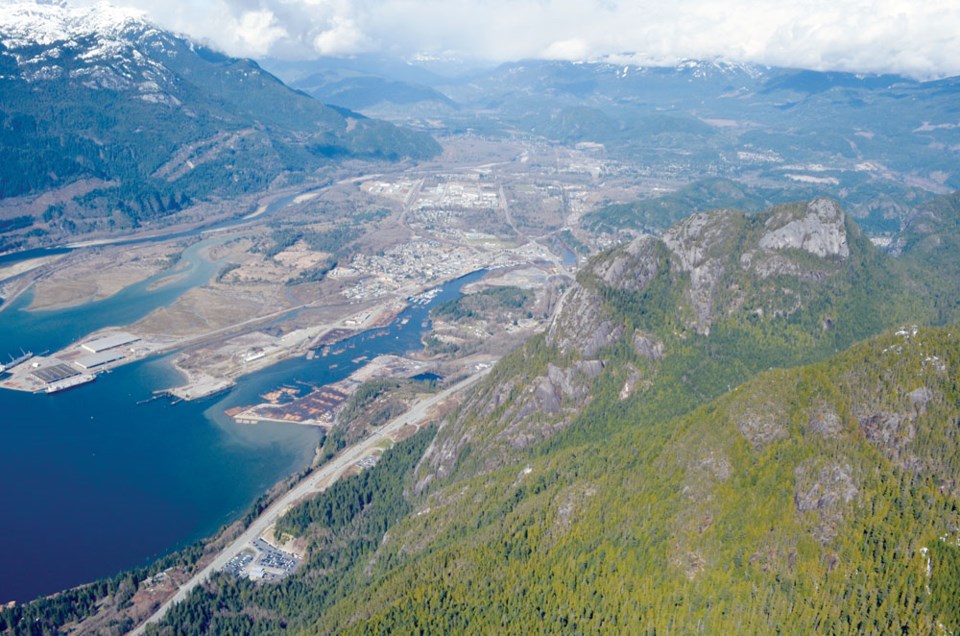The provincial government says that strengthened project reviews are now in force, a measure that could change the way future projects in Squamish — and throughout B.C. — are given environmental assessments.
However, Squamish activist group My Sea to Sky has decried the changes to the new Reviewable Projects Regulation.
“I am angry, disillusioned, and frustrated,” said Tracey Saxby, the group’s executive director, in an email to The Chief.
“The B.C. EAO [Environmental Assessment Office] has weakened the thresholds that will trigger an Environmental Assessment under the guise of making them stronger.”
The provincial government, however, says these new measures are intended to ensure greater public participation, and participation from Indigenous nations, at every stage of the environmental assessment (EA) process.
These assessments are required before some projects, like Woodfibre LNG, or Garibaldi at Squamish can move forward.
After a year-long review, which included a public comment period from September to October, the government has implemented changes to the regulations that determine what projects trigger an environmental assessment.
Saxby called the EAO a “captured regulator,” meaning the office is too influenced by the industry it’s supposed to regulate.
“It’s particularly apparent when you look at who they consulted during the [review] process,” she said.
A recent government report, called Environmental Assessment Revitalization Reviewable Projects Regulation What We Heard, states that with respect to formal submissions during the comment period, 14 were from industry, seven were from environmental non-governmental organizations, four were from Indigenous Nations and two were classified as “other.”
Separate from those submissions, among the 1,500 who at least partially filled out a survey, 95% were identified as members of the general public.
These numbers don’t include the prior consultations with local government, Indigenous Nations and non-governmental organizations, among others, made before the public comment period.
The new rules spell out the criteria for which projects should be given an environmental assessment. The government created different project categories, which are: industrial, mines, electricity, petroleum and natural gas, water management, waste disposal, food processing, transportation and tourist destination resorts.
If a project can’t fit into one of those categories, it won’t be given an environmental assessment.
Critics say that there should be a catch-all category for projects like fish farms and forestry that don’t fall into one of these project categories. But the EAO says that would create duplication with assessments by bringing in projects already governed by other regulations.
In a response detailed in a report called What We Heard Tracking Table, the province said “such projects are not being proposed as new [Reviewable Projects Regulation] project categories, as they are already governed by regulatory frameworks that include legislation, regulations, permitting processes and ongoing compliance and enforcement monitoring that are specifically tailored to that industry or activity.”
Should a project fit into one of the EAO’s categories, officials will then examine whether the project meets the thresholds for that specific category. If the project meets the threshold, this will trigger an environmental review.
Some examples of thresholds include the amount of pay dirt associated with a mine or the amount of energy produced by a power plant.
Saxby said the public indicated during the public comment period that there was a desire for stronger, meaning lower, thresholds.
“Yet even the public comments to inform the improvements to the environmental assessment process have been completely ignored by the BC EAO,” she said.
In its report, the province said that 37% of respondents said the design thresholds should be lower, which would make it easier to trigger an environmental review.
Following feedback, the province lowered the thresholds for electric transmission lines.
Thus, currently, new electric transmission lines are automatically reviewable if longer than 40 km and more than 345 KV. Previously, the threshold was 500 KV.
If a project fits into a category but doesn’t trigger any of the category-specific thresholds, there’s still a second set of “effects thresholds” that could be triggered. The province says this acts as a backstop to ensure projects with small designs are still reviewable if they have larger effects.
These effects thresholds measure the repercussions of greenhouse gas emissions, protected areas, linear disturbance (roads or pipelines), and area of disturbance.
When project’s impact on these measures reaches a certain point, the public will be notified of the impact. However, this doesn’t necessarily mean an environmental assessment would
be triggered.



